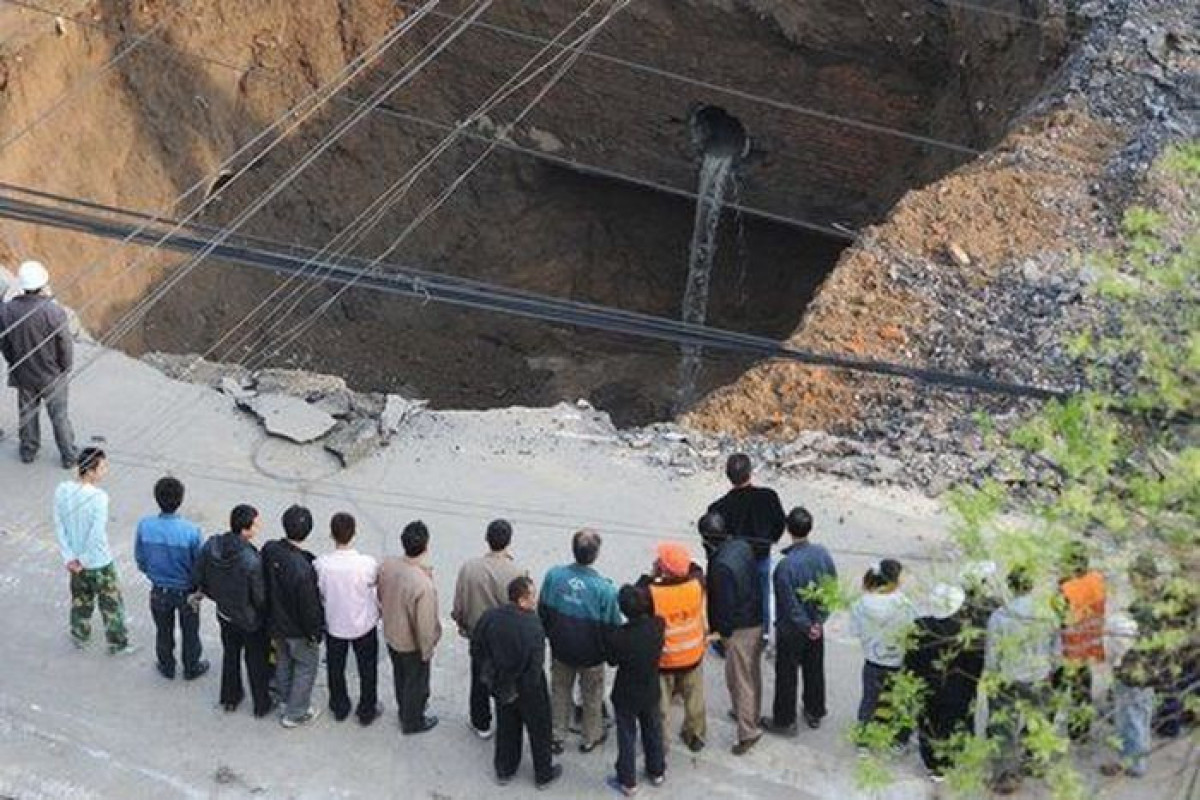Nearly half of China's major cities are sinking because of water extraction and the increasing weight of their rapid expansion, researchers say, APA reports citing BBC.
Some cities are subsiding rapidly, with one in six exceeding 10mm per year.
China's rapid urbanisation in recent decades means far more water is now being drawn up to meet people's needs, scientists say.
In coastal cities, this subsidence threatens millions of people with flooding as sea levels rise.
China has a long history of dealing with subsiding land, with both Shanghai and Tianjin showing evidence of sinking back in the 1920s. Shanghai has sunk more than 3m over the past century.
In more modern times, the country is seeing widespread evidence of subsidence in many of the cities that have expanded rapidly in recent decades.
To understand the scale of the problem, a team of researchers from several Chinese universities have examined 82 cities, including all with a population over 2 million.
They've used data from the Sentinel-1 satellites to measure vertical land motions across the country.
Looking across the period from 2015 to 2022, the team was able to work out that 45% of urban areas are subsiding by more than 3mm per year.
Around16% of urban land is going down faster than 10mm a year, which the scientists describe as a rapid descent.
Put another way, this means 67 million people are living in rapidly sinking areas.
The researchers say that the cities facing the worst problems are concentrated in the five regions highlighted on the map below.
The scale of decline is influenced by a number of factors, including geology and the weight of buildings. But a major element, according to the authors, is groundwater loss.
This essentially means the extraction of water underneath or near cities for use by the local population.
This has already been seen in several major urban areas around the world including Houston, Mexico City and Delhi.
In China, the research team were able to associate the extraction of water from over 1,600 monitoring wells with increasing levels of subsidence.
"I think the water extraction is, to my mind, probably the dominant reason," said Prof Robert Nicholls, from the University of East Anglia, who was not involved in the research.
"In China there are lots of people living in areas that have been fairly recently sedimented, geologically speaking. So when you take out groundwater or you drain the soils, they tend to subside."
Other factors that are influencing subsidence include urban transportation systems and mining for minerals and coal.
In the northern region of Pingdingshan, one of the largest coal areas in the country, land is subsiding at an extremely rapid 109mm per year.
The authors of the study say that a big threat going forward is the exposure of urban populations to flooding, from a combination of subsidence and sea level rise brought about by climate change.
In 2020, around 6% of China had a relative elevation below sea level. In 100 years time, this could rise to 26% of the country in a mid to high carbon emissions scenario.
The researchers say the land is sinking faster than the seas are rising, but together they would put hundreds of millions at risk of flooding.
However, research shows that there are effective strategies that can combat the slow decline.
Subsidence issues have afflicted other major urban centres in Asia, including Osaka and Tokyo in Japan in the past.
"Tokyo subsided around the port area, up to five metres in the 20th century," said Prof Nicholls.
"But in the 1970s, they provided good piped water from other areas and they also had a law saying you will not use well water and essentially it stopped the subsidence."






